Watering your garden is a necessary chore, but it doesn’t have to be a difficult one. One way to make watering your plants easier is to use a soaker hose. Soaker hoses are great for watering gardens because they distribute water evenly and slowly, which prevents runoff and saves water. But how much water does a soaker hose use? And what are the best ways to use them? Keep reading for answers to these questions and more!
Getting the Most From Your Soaker Hose
Easy to Use
Soaker hoses are easy to use and install. You can attach them directly to a water source or use an attachment to connect them to your garden hose. All you need is a flat surface and some stakes or weights to keep the hose in place while it’s running. [2]
Water-Saving
Soaker hoses are designed to be water-saving devices. They distribute water slowly, allowing it to soak into the ground rather than running off and being wasted. This also helps reduce evaporation and keep your plants healthy. How much water does a soaker hose use? Generally, they use between 20 and 50 percent less water than traditional sprinklers or hand watering. [2]
Solutions That Work
Not all soaker hoses are the same, and you may need to experiment with different types to find one that works best for your garden. Some models come with adjustable nozzles, allowing you to control the amount of water that comes out. Other models don’t require any adjustment at all – just turn them on and let them do their job! The key is finding a solution that works for your particular garden needs. [2]
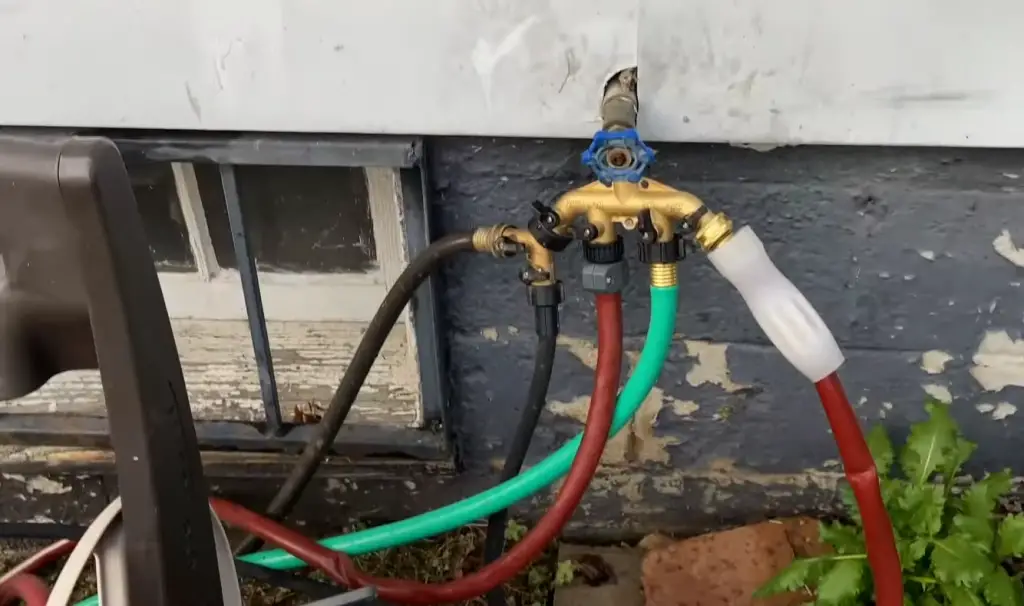
Healthy Plants
Using a soaker hose to water your garden can help keep your plants healthy and strong. The even distribution of water helps ensure that the soil stays evenly moist, which prevents dry spots that could harm your plants. Additionally, the slow release of water means there’s less chance of over-watering and root rot. [2]
A Few Main Differences In How Soaker Hoses Are Made
When it comes to soaker hoses, there are a few main differences in how they are made.
Another option is a synthetic fabric-covered soaker hose. These hoses come in several sizes and have tiny pores that allow the water to pass through the fabric more easily than a regular garden hose does. They are flexible and lightweight, making them easy to install in tight spaces like under decks or between flower beds.
Lastly, there are flat soaker hoses that are made from a single sheet of PVC plastic with tiny slots cut into it. These hoses lay flat on the ground and release water along their full length at a slight pressure. Since they take up less space than traditional hoses, they can be used in areas where garden hose installation would be difficult or impossible. [1]
How to Gauge Water Consumption In Your Soaker System?
In order to accurately measure how much water your soaker hose is consuming, you will need to do two things:
- First, check the pressure inside your system – this can be done using an inexpensive pressure gauge. If the pressure is too high, it could lead to excessive water use and damage to the components of your system;
- Second, measure the flow rate of your soaker hose. This can be done by connecting a garden hose timer or a flow meter between the faucet and the soaker hose. By measuring how long it takes for one gallon (or liter) of water to pass through the hose, you can calculate its flow rate in gallons per minute (GPM) or liters per minute (LPM);
Finally, take into consideration the size and type of plants that you are irrigating with your soaker hose. Different types of plants require different amounts of water to thrive, so adjusting your settings accordingly can make sure that your plants get the right amount without wasting any extra water. [1]
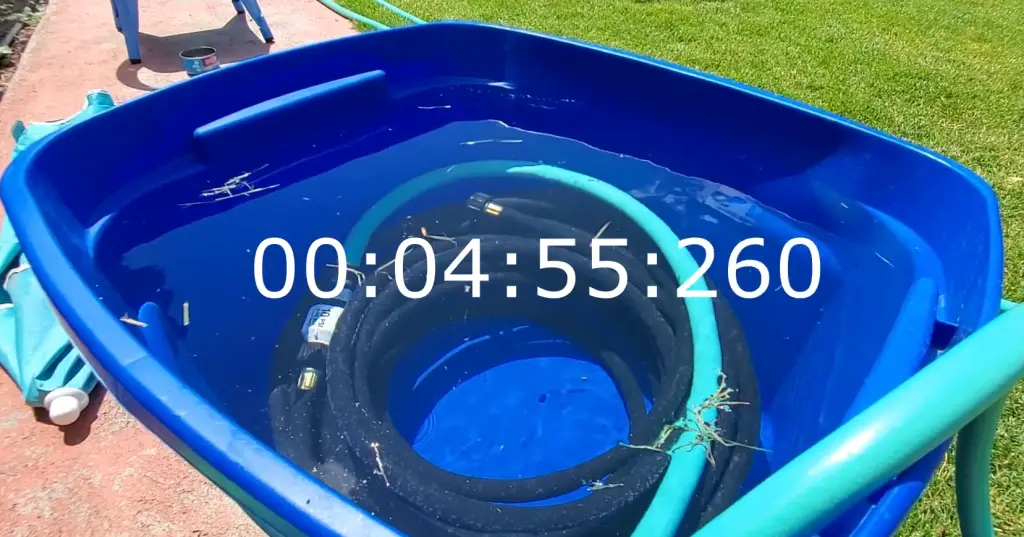
Do Soaker Hoses Save Water?
The simple answer to this question is yes!
Soaker hoses are especially useful for new gardens or planted beds because these areas tend to require frequent watering in order to establish strong roots and promote healthy growth. Over time, as the plants become established and their roots reach deeper into the soil, you can reduce how often you water with a soaker hose and still maintain healthy plants. [1]
Using a Soaker Hose to Conserve Water
Using a soaker hose is an efficient way to conserve water when watering plants. The design of the hose allows for it to slowly seep water into the soil, instead of just spraying water in one area and allowing it to evaporate or run off. [1]
How Much Area Do Soaker Hoses Effectively Water?
Soaker hoses are a great way to conserve water because they slowly and efficiently release water, allowing it to be absorbed by the soil and roots. But soaker hoses also have their limits, and knowing how much area your soaker hose can effectively cover is important for making sure you don’t over- or under-water your plants.
It’s important to take into account the size of your plants when deciding on a soaker hose as well; if you have a large area of plants that are spaced farther apart, then it’s best to opt for the bigger hose. [1]
Can Soaker Hoses Be Connected Together Without Changing Water Output?
Yes, soaker hoses can be connected together without changing the water output. This is because a soaker hose works by slowly seeping water out of tiny pores along its length. Connecting two sections of the soaker hose together will not increase or decrease the total rate at which it emits water. Of course, you cannot connect an unlimited number of hoses together as eventually, you would create too much back pressure for the system to cope with, and water would stop flowing altogether. [1]
How Much Pressure is Needed to Use a Soaker Hose?
Soaker hoses operate at low pressure and do not require any more than 10 PSI (pounds per square inch). As with all garden hoses, regular maintenance is important. If your soaker hose has kinks or leaks, the water pressure will decrease and less water will be released from the holes. To ensure that your soaker hose is working correctly, inspect it regularly and replace it if necessary. [1]
Are All Soaker Hoses the Same?
No, not all soaker hoses are the same. There are different sizes, designs, and materials that make up each soaker hose. You’ll want to consider factors such as length, diameter, flow rate (how much water it can hold), and other features when choosing a soaker hose for your garden.
For example, if you’re looking for a soaker hose to cover a large section of your garden, then you’ll need one with higher flow rates or larger diameters than shorter versions. It’s also important to select one made from high-quality material that is designed to last and withstand extreme weather conditions. Additionally, some come equipped with reinforced fittings which help prevent leaks over time. [1]
The Most Common Types of Soaker Hoses
Plastic or Vinyl Soaker Hoses
Plastic or vinyl soaker hoses are lightweight, inexpensive, and easy to use. They are ideal for small gardens or flower beds, although they may not last as long as other types of soaker hoses. When using a plastic or vinyl soaker hose, it’s important to note that the water pressure needs to remain constant in order for the hose to work properly. [1]
Fibrous Soaker Hose
Fibrous soaker hoses are designed to be more durable than plastic or vinyl hoses. They are also heavier and more expensive, but they will last longer and work better in large gardens or yards. Fibrous soaker hoses have the advantage of having a greater water-absorbing capacity, which means that less water will be wasted. [1]
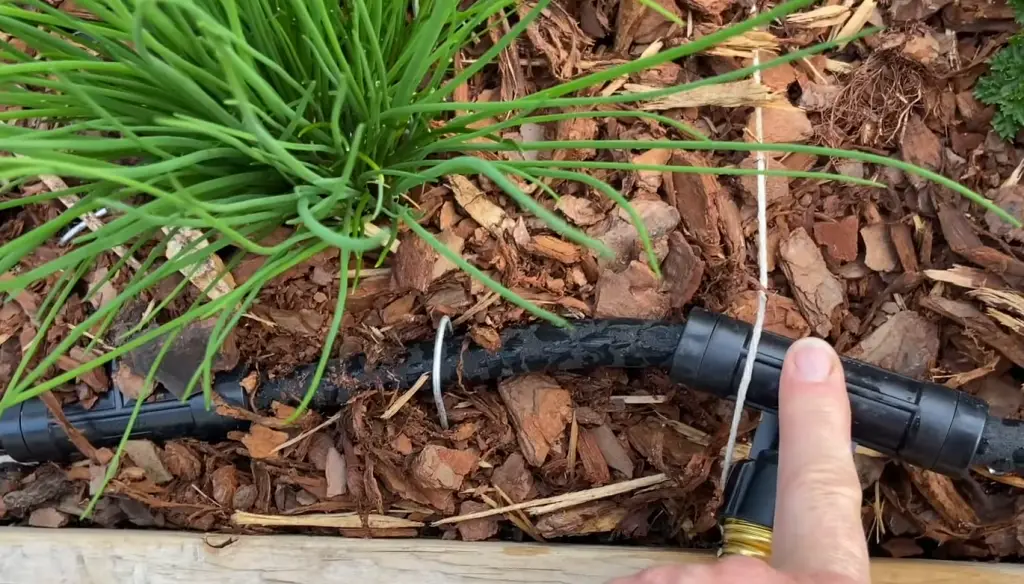
Soak and Spray
Soak and spray soaker hoses are a combination of the two types above. They have the same durability as fibrous hoses, with the added bonus of being able to switch between soaking and spraying settings, depending on your watering needs. Soak and spray soaker hoses can be used for both small and large gardens or yards. [1]
Sprinkler Hose
Sprinkler hoses are not technically classified as soaker hoses, but they can be used to provide a gentle spray of water for plants. Sprinkler hoses are often used in areas where the soil needs to be kept moist, such as vegetable gardens or flower beds. They use more water than traditional soaker hoses and should be used sparingly. [1]
FAQ
How much water does a soaker hose use per minute?
How much water does a 30-minute soaker hose use?
A 30-minute soaker hose typically uses around 15 gallons of water. However, this can vary depending on the size and pressure of the hose.
How long should you let a soaker hose run?
Typically, a soaker hose should run for approximately 30 minutes. This will give the plants enough time to properly absorb the water and ensure that they are getting an adequate amount of moisture.
How effective are soaker hoses?
Soaker hoses can be very effective when used correctly. By slowly soaking the soil, they give plants enough water to stay healthy and prevent over-watering. They are also incredibly efficient in terms of water usage compared to other methods of irrigation.
Can I leave a soaker hose on all the time?
No, it is not recommended to leave a soaker hose on all the time. Doing so can cause overwatering, which can lead to soil erosion and plant diseases. To get the most out of your soaker hose, it is best to only use them when necessary and turn them off after 30 minutes or less.
Can you run a soaker hose overnight?
No, it is not recommended to run a soaker hose overnight. This can lead to overwatering and cause problems for your plants. It is best to only run the soaker hose for 30 minutes or less at a time.
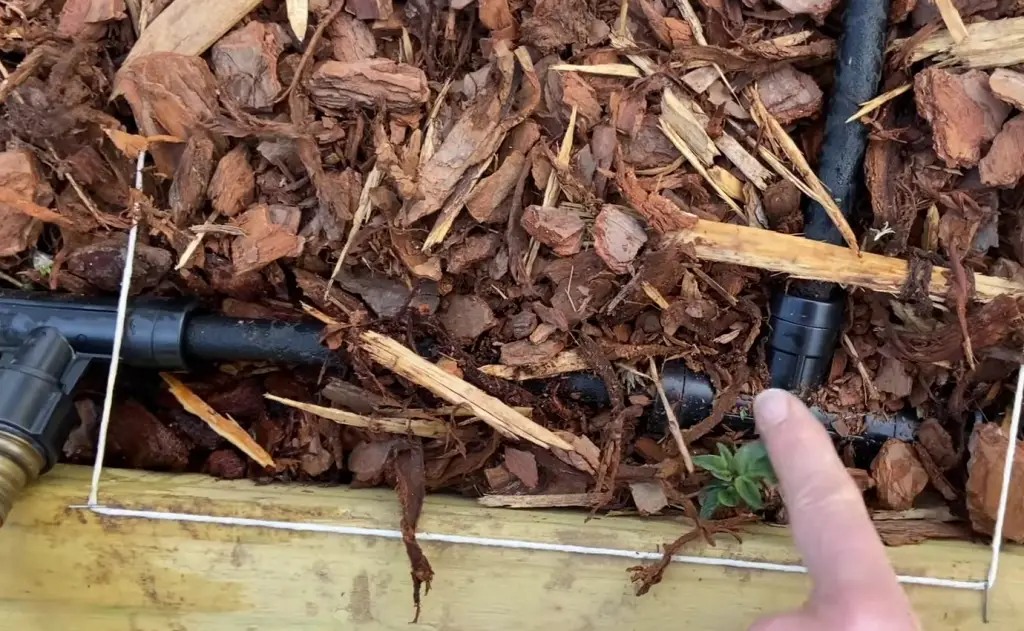
Why is it better to use a soaker hose instead of a sprinkler?
Soaker hoses are much more efficient than sprinklers in terms of water usage. They also give your plants an even distribution of water, which helps them stay healthy and prevents over-watering. Sprinklers can be wasteful and cause uneven watering, making them less ideal for irrigating your garden.
How much water does a 50-foot soaker hose use per hour?
A 50-foot soaker hose typically uses around 8 gallons of water per hour. However, this can vary depending on the size and pressure of the hose. It is best to monitor your water usage to ensure that you are not over-watering your plants.
Should you bury your soaker hose?
Yes, it is recommended to bury your soaker hose. This will help the water reach the roots of your plants more effectively and reduce evaporation, leading to more efficient usage of water. It also prevents damage from foot traffic and other elements.
Useful Video: Exposed: How Much Water Soaker Hoses Actually Use Per Hour
Conclusion
Soaker hoses are a great way to conserve water in your garden and save money on your water bill. A soaker hose uses much less water than traditional sprinklers, but you still need to be mindful of how long you leave it running. Generally speaking, you should use between one and three hours per watering session depending on the size of the area you are watering. You should also check your soaker hoses regularly for cracks or leaks to ensure it is functioning properly and using only the correct amount of water. With a little bit of planning, soaker hoses can be a great way to keep your garden healthy without wasting water. Thanks for reading!
References:
- https://turfmechanic.com/how-much-water-does-a-soaker-hose-use-per-hour/
- https://www.waterirrigation.co.uk/how-to-use-soaker-hose





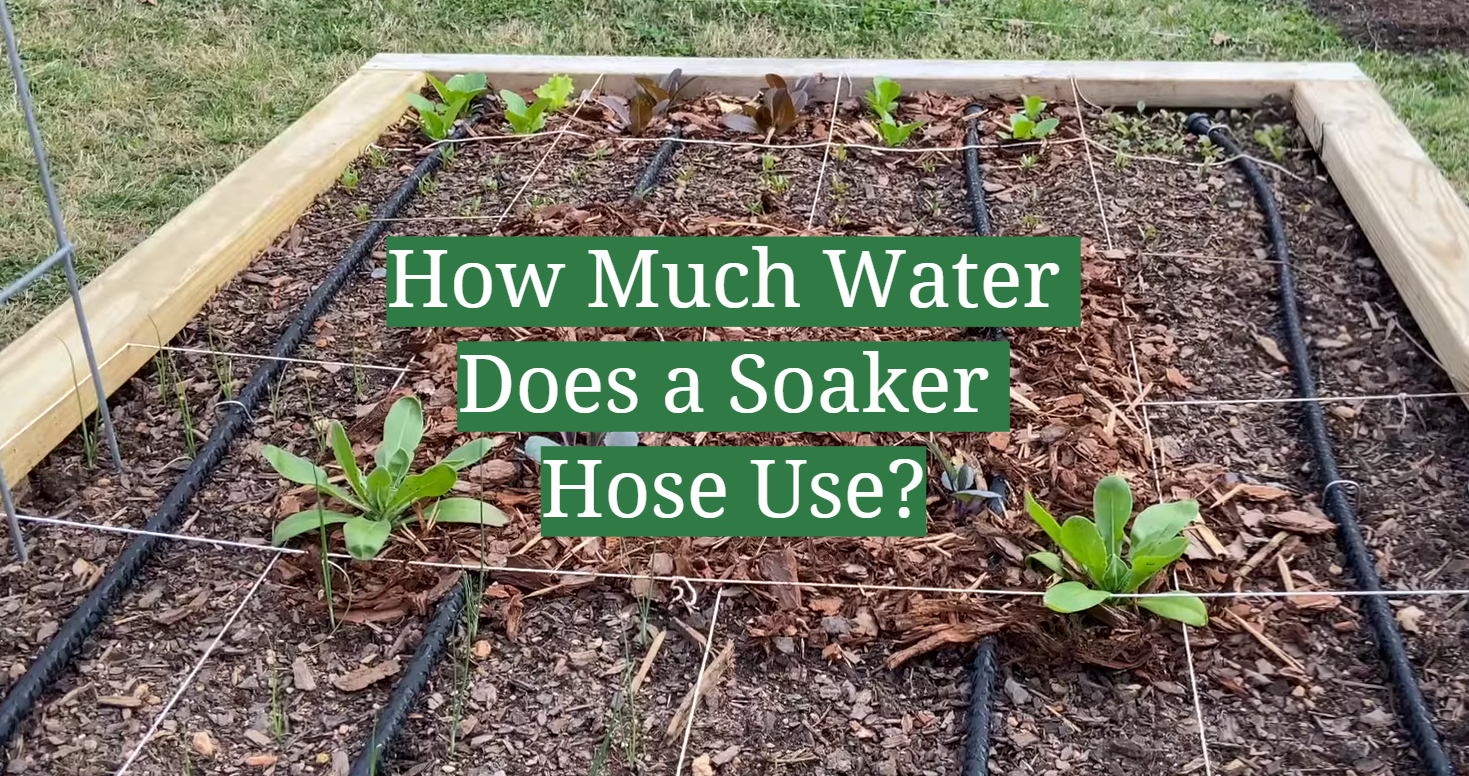
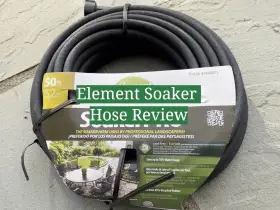
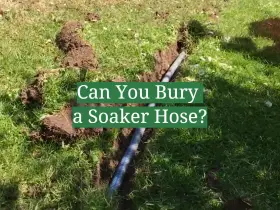
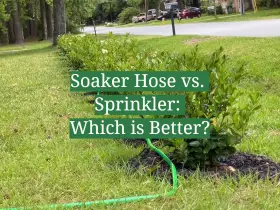
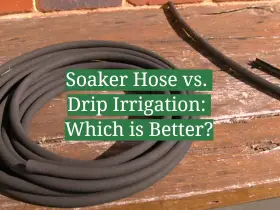
Leave a Reply
View Comments